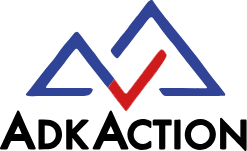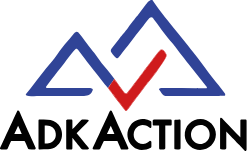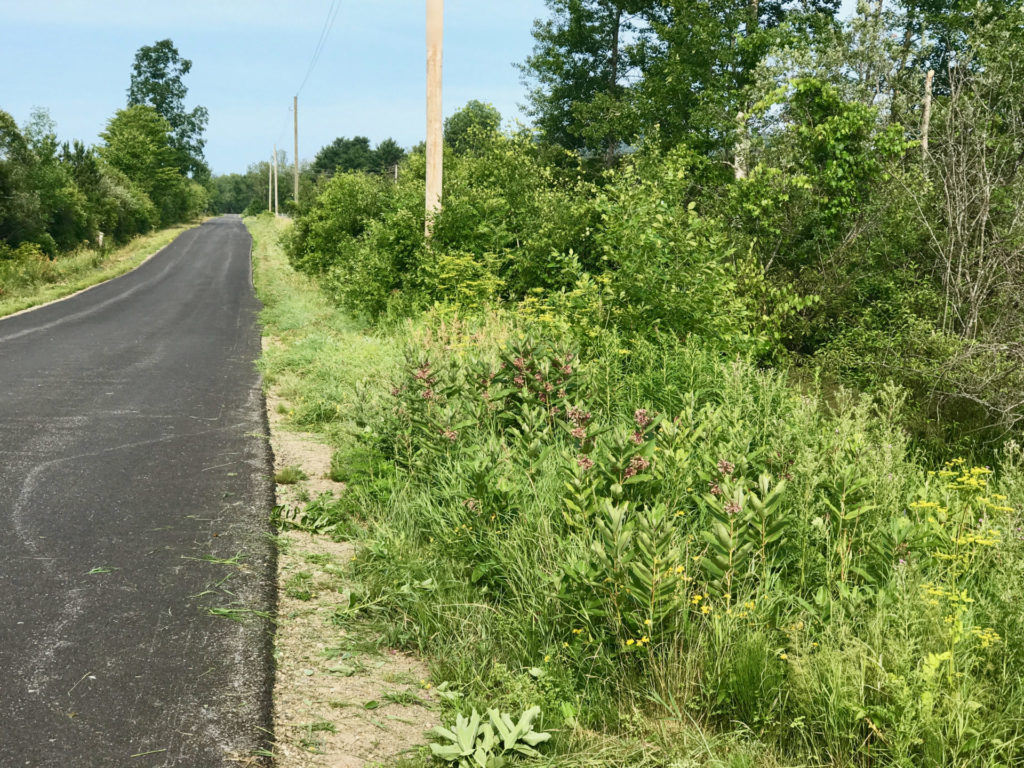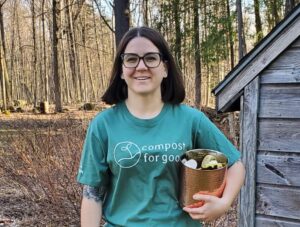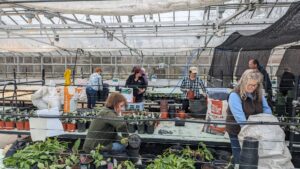by Lisa Salamon, AdkAction Adirondack Pollinator Project and AdkAction Board
It is more than just milkweed.
Over the next few years, the negative financial impact from the COVID virus could result in a positive effect on the ADK’s smallest and most venerable wildlife—pollinators. As NY State, County and Town budgets look to make cuts, the reduction or elimination of roadside mowing programs can yield budget savings while increasing pollinator habitat.
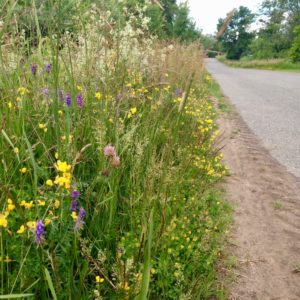 Pollinators—the native bees, moths, butterflies, wasps, flies, and hummingbirds—in the Adirondacks play a crucial, yet unseen role in our local economies. The forests they pollinate benefit the sugaring and logging industries and feed larger wildlife. The crops they pollinate feed us. Birds eat pollinators and feed thousands of pollinator larvae to their young. Tourists are drawn to the Adirondacks to drive roads with beautiful scenery, view natural landscapes, and enjoy pollinators flitting about.
Pollinators—the native bees, moths, butterflies, wasps, flies, and hummingbirds—in the Adirondacks play a crucial, yet unseen role in our local economies. The forests they pollinate benefit the sugaring and logging industries and feed larger wildlife. The crops they pollinate feed us. Birds eat pollinators and feed thousands of pollinator larvae to their young. Tourists are drawn to the Adirondacks to drive roads with beautiful scenery, view natural landscapes, and enjoy pollinators flitting about.
In the Adirondacks, roadsides, road medians, utility right-of-ways, and forest edges can provide thousands of miles of key pollinator habitats. Yet often that habitat is removed by mowing, spraying and weed whacking. But must we continue to mow our roadsides down to a brown stubble just because it has always been done that way?
Many other states have answered that question and adopted plans to reduce or eliminate roadside mowing to bolster pollinator populations. In Ohio, the Department of Transportation (DOT) has changed mowing practices to increase pollinator habitat, save taxpayers millions of dollars each year, and free up crews to do more needed road maintenance. Ohio DOT reported that reduced mowing will decrease costs of fuel and personnel hours working with vegetation and chemicals. It will also improve worker safety by requiring fewer maintenance crews on roadsides, help reduce snow drift, and improve plant diversity and abundance at existing habitat sites.
As for pollinator impacts, in its first year of the program Ohio reported 100-fold increases in the iconic monarch butterfly population and in native bee populations. And it is more than just milkweed and monarchs–many other native plants such as asters and goldenrods rebounded and so did the pollinators that depend on them. Farmers even reported better crop yields in fields bordering pollinator roadways.
The Adirondacks can learn a lot from Ohio and other states that have adopted pollinator protection programs. Our Adirondack Pollinator Project (APP) committee has been working with organizations to plant more native pollinator plants, distribute native plant seeds, and create pollinator awareness.
